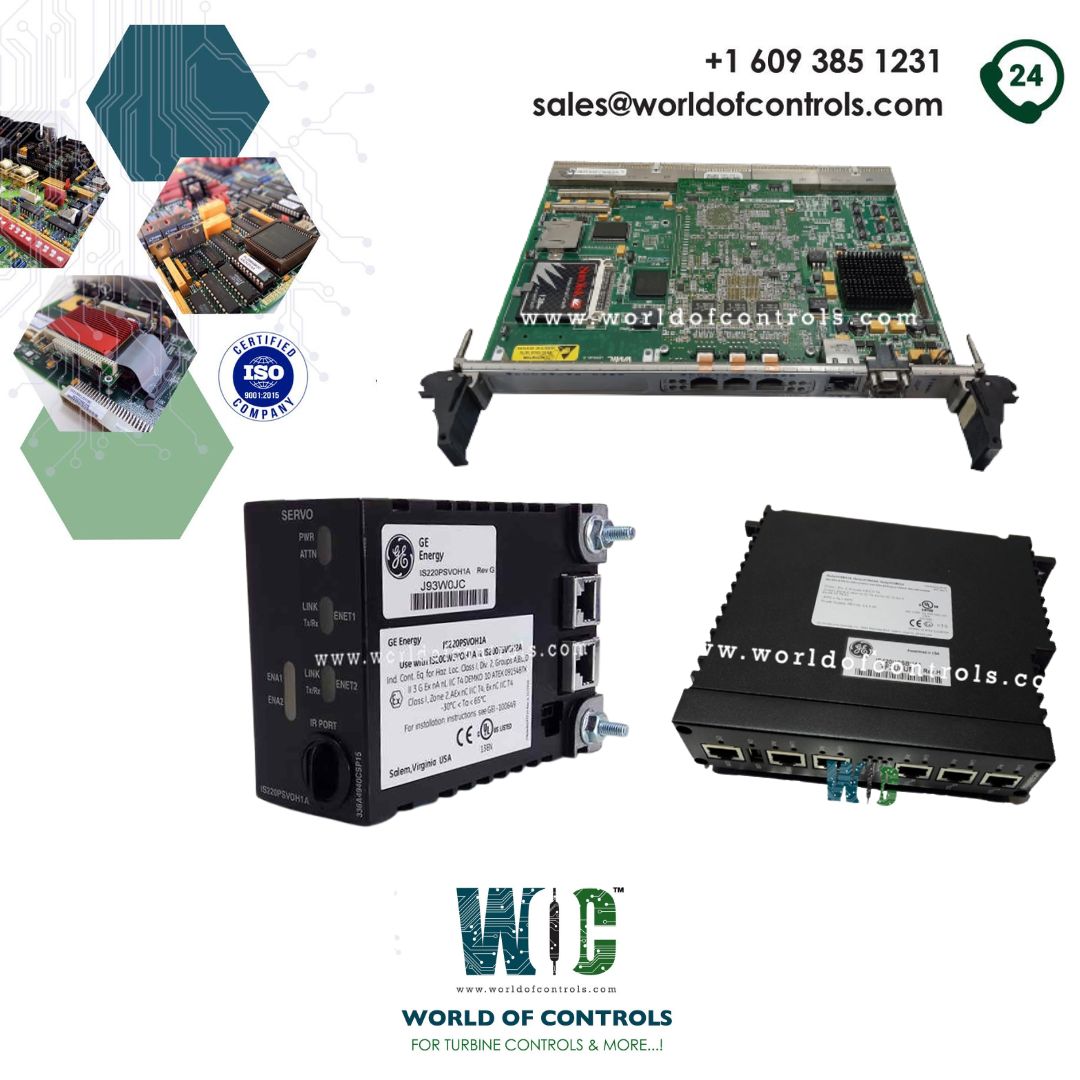GE Speedtronic Mark VIe TMR module Features
- In a TMR Mark VIe control system, the typical configuration for the T-type TMR board involves distributing inputs to three separate I/O packs. Normally, the hardware of the T-type board processes and aggregates the outputs from these three I/O packs. However, it's worth noting that certain application-specific TMR terminal boards may deviate from this standard practice by neither distributing inputs nor aggregating output votes.
- Within this TMR Mark VIe control system, all three controllers receive inputs from I/O modules across all networks and continually transmit outputs via their respective IONet connections. Importantly, should a controller or network component experience a failure, the system doesn't rely on fault detection or require any failover time to maintain its operational status.
- Each controller transmits its version of the state variables once the output packet has been dispatched. Subsequently, each controller takes these three sets of state variables and conducts a voting process to determine the values for the subsequent run cycle.
Output Processing
- The output voting hardware is responsible for the voting process of TMR outputs. Simplicity hardware allows any system to produce individual signals independently. The three voting controllers perform separate calculations for the TMR system outputs.
- Each controller transmits its output to its respective I/O hardware (for instance, the R controller sends output to the R I/O). These three distinct outputs are subsequently merged into a unified output through a voting mechanism. Various signal types necessitate distinct methods for determining the final voted value.
WOC is happy to assist you with any of your GE Mark V requirements. Please contact woc by phone or email for pricing and availability on any parts and repairs.
Frequently Asked Questions
What are state variables of GE Speedtronic Mark VIe TMR module?
State variables refer to the current status or data related to the system's operation. Each controller transmits its copy of the state variables after sending out an output packet.
Why is voting performed in this system?
Voting is a redundancy technique that helps ensure the accuracy and reliability of system outputs. By having multiple controllers vote on the data, the system can identify and mitigate errors or discrepancies in the data.
Are there different methods for determining the voted value based on signal types?
Yes, different signal types may require different methods for establishing the final voted value. These methods are likely tailored to the specific needs and characteristics of each type of signal.�
